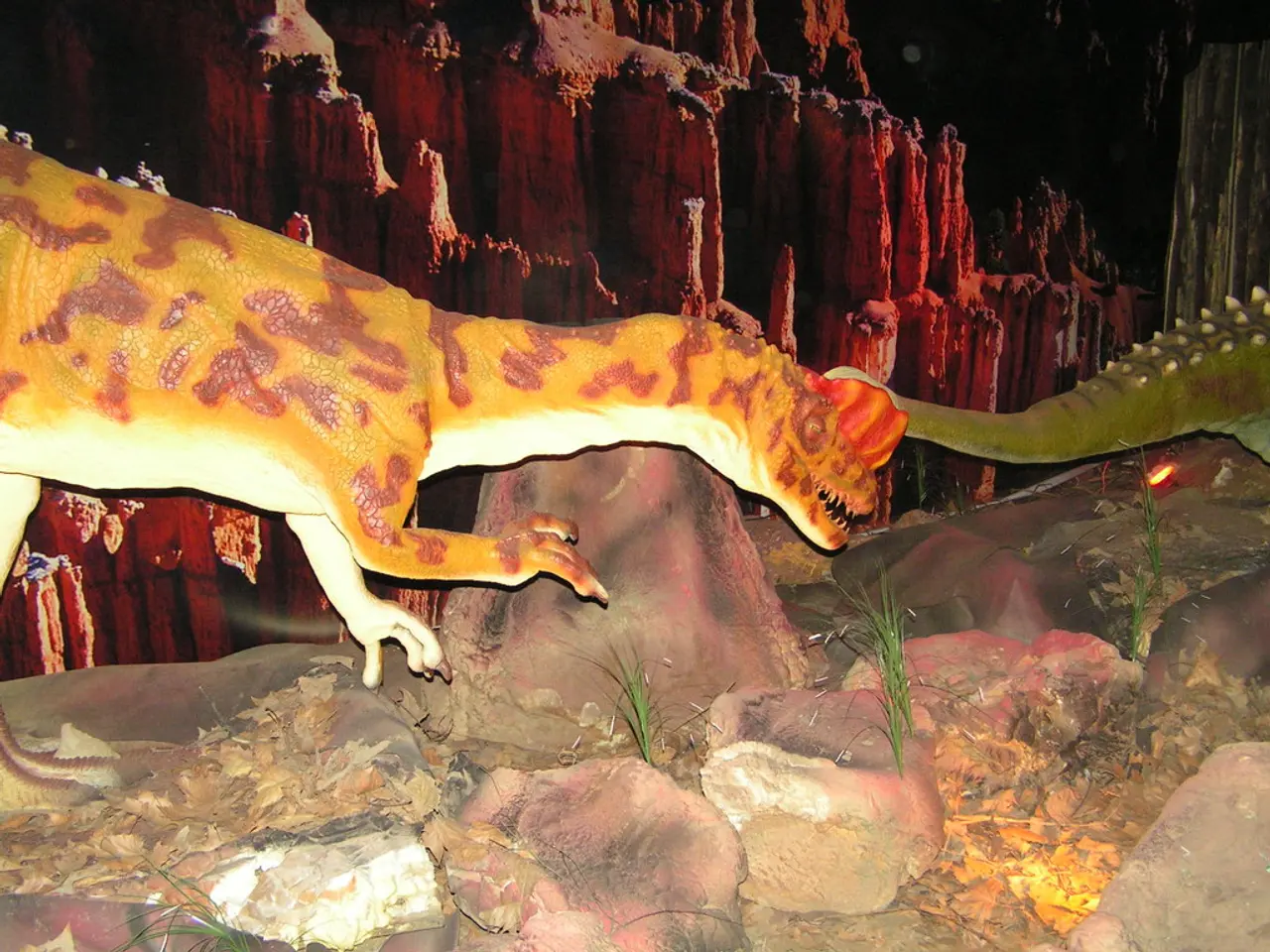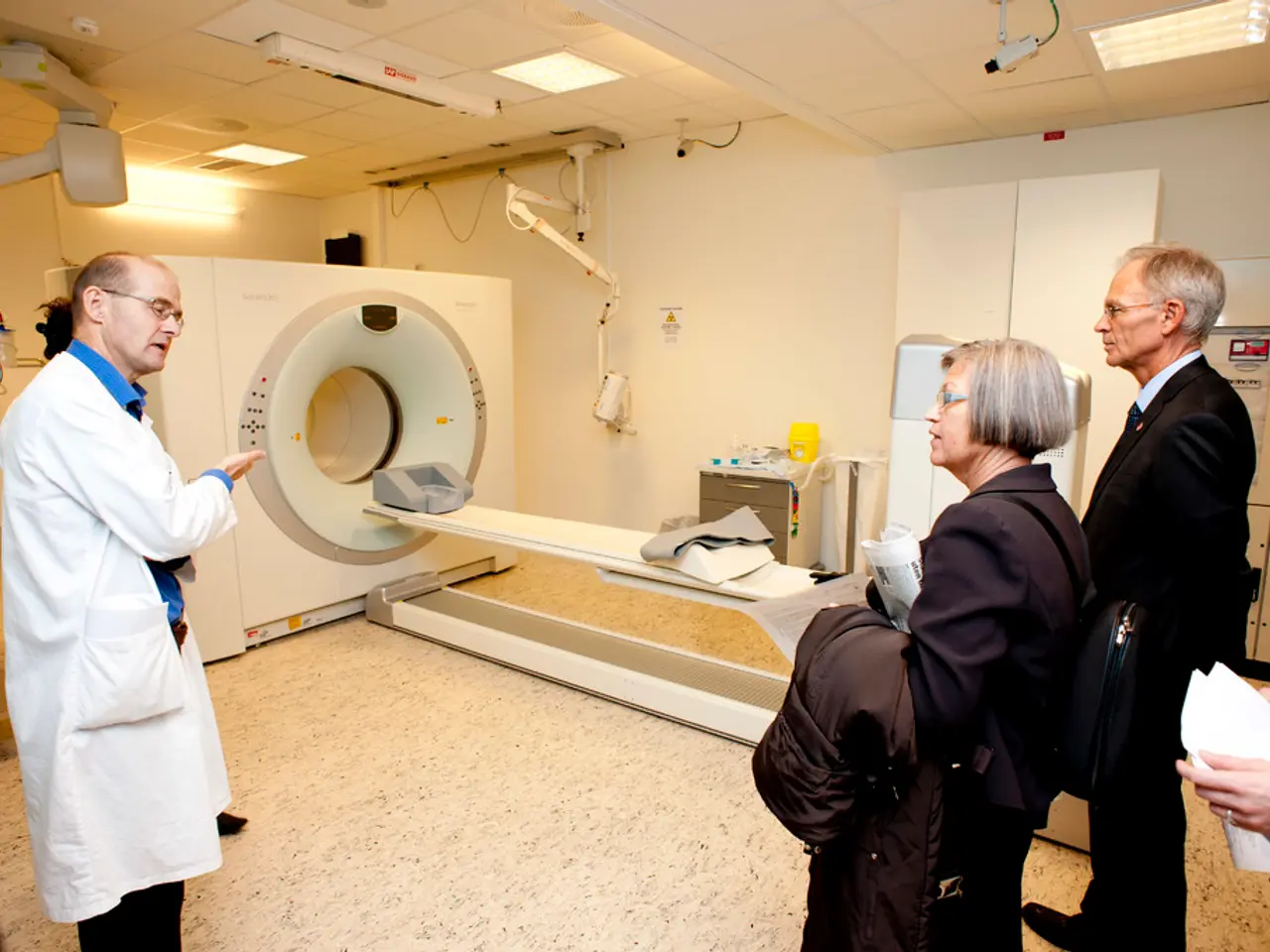Ancient Dino Teeth Reveal CO2 Levels' History and Implications for Human Endurance
In a groundbreaking discovery, a team of geochemists has developed a novel method to reconstruct ancient atmospheric carbon dioxide (CO2) concentrations using the isotopic composition of oxygen atoms preserved in fossilized dinosaur tooth enamel. This breakthrough offers a unique perspective on Earth's climate history, providing insights into the impacts of elevated CO2 levels on prehistoric ecosystems and offering valuable analogies for present and future climate change.
The analysis of oxygen isotopes in fossilized dinosaur teeth allows scientists to directly reconstruct past atmospheric CO2 concentrations during the Mesozoic Era (252 to 66 million years ago). This research reveals that CO2 levels were up to four times higher than preindustrial levels, shedding light on prehistoric climates, vegetation productivity, and atmospheric composition.
These "carbon pulses" from massive flood basalt eruptions likely caused rapid, large-scale increases in greenhouse gases, affecting climate and ecosystems on relatively short geological timescales. The Mesozoic's fluctuating and often extreme greenhouse gas levels were linked to these volcanic eruptions and environmental upheavals.
Oxygen isotopes, particularly the rare oxygen-17, are preserved exceptionally well in dinosaur tooth enamel, a highly stable tissue. These isotopes reflect the oxygen isotopic composition of the air the dinosaurs breathed and the water they drank. Since the ratios of oxygen isotopes in atmospheric oxygen are influenced by global photosynthesis and atmospheric CO2, measuring them in teeth yields a direct chemical record of ancient atmospheric conditions.
This method offers several advantages over traditional methods that use marine proxies, such as plankton shells or soil carbonates, which indirectly infer atmospheric CO2 by ocean chemistry. Dinosaur teeth provide a land-based, direct snapshot of the atmosphere as experienced by terrestrial vertebrates, filling a gap in paleoclimate research.
The findings reveal that CO2 concentrations during the Jurassic and Cretaceous periods reached 750 to 1,200 parts per million (ppm) — significantly higher than current levels (~430 ppm). Elevated CO2 and photosynthetic activity corresponded with dynamic, warm climates with dense vegetation, enabling large dinosaur megafauna to thrive.
Understanding how past ecosystems and organisms responded to high CO2 and warming periods helps predict how modern ecosystems and human societies might adapt or suffer under continuing anthropogenic emissions and climate change. It offers a long-term perspective on carbon cycle feedbacks, biodiversity resilience, and extinction risk, informing climate mitigation and adaptation strategies.
For example, studies on fossil teeth from later warm periods (e.g., the Paleocene-Eocene Thermal Maximum) show shifts in animal behavior that parallel ongoing ecological disruptions, highlighting the relevance of paleoclimate reconstructions for contemporary wildlife and human health projections.
In summary, fossil dinosaur teeth act as natural "climate time capsules," providing direct, novel evidence of ancient atmospheric CO2 and associated environmental conditions that enhance our understanding of Earth's climate past, guiding better predictions of climate impacts on human survival today and into the future. The Mesozoic record highlights the potential magnitude of natural CO2 fluctuations that can drive drastic climate and ecological change.
This research underscores the urgent need for humanity to manage CO2 emissions to avoid entering climate conditions that are inhospitable to modern civilization. Such instability would pose severe challenges to human food security, water availability, and ecosystem services. By studying the past, we can better prepare for the future and mitigate the impacts of climate change on our planet.
- The method of analyzing oxygen isotopes in fossilized dinosaur teeth, a novel approach in science, directly reconstructs past atmospheric CO2 concentrations during the Mesozoic Era, thereby providing valuable insights into the impacts of CO2 on prehistoric ecosystems and offering analogies for present and future climate change.
- Recent studies, such as those on fossil teeth from later warm periods, show shifts in animal behavior that mirror ongoing ecological disruptions, suggesting that the insights gained from these paleoclimate reconstructions are highly relevant for contemporary wildlife and human health projections.
- In light of the research on dinosaur teeth as natural "climate time capsules," revealing CO2 concentrations during the Jurassic and Cretaceous periods exceeding current levels, it is crucial for humanity to manage CO2 emissions, according to the principles of health-and-wellness, to avoid entering climate conditions that could pose severe challenges to modern civilization, including food security, water availability, and ecosystem services, thus helping us prepare for and mitigate the impacts of climate change on our planet.




